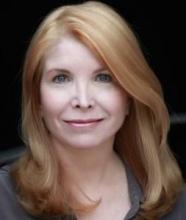Anesthesiology Model Must Change

I’m officially leaving private practice after almost 18 years, to return to academic medicine with a faculty position in a highly regarded California department of anesthesiology.
Why would I do that?
I believe in the teaching mission of academic medicine: To train the anesthesiologists of the future, and the scientists who will advance medical care. I enjoy teaching. The years I’ve spent at the head of the operating room table, anesthetizing patients every day, have given me a great deal of hands-on experience (and at least some wisdom) that I’m happy to pass along to the next generation.
But the other reason is this: I’ve lost confidence in the ability of private-practice anesthesiology in California to survive in its prevalent physician-only form. Nationally, there are slightly more non-physicians — including nurse anesthetists (about 47,000) and anesthesiologist assistants (about 1,700) — than physician anesthesiologists (about 46,000) in the workforce, according to 2015 National Provider Identifier (NPI) data.
But in California, there are about 5,500 physician anesthesiologists and only 1,500 nurse anesthetists in the workforce, while anesthesiologist assistants cannot be licensed here at all.
It’s hard to see how such a physician-skewed model of anesthesia care can continue to be financially viable. There’s no way it makes sense for many of the tasks involved to be performed directly by a physician.
Many of the daily tasks involved in physician-only, personally-provided anesthesia care could and should be delegated to nurses, pharmacists, and technicians. Easy examples include starting IVs, drawing up medications, labeling syringes, and monitoring a patient’s blood pressure.
Logically, it’s an appropriate use of physician anesthesiologist skills to decide, for example, if a patient’s heart condition has been adequately optimized prior to proceeding with surgery. If there’s a problem during anesthesia with a sudden change in blood pressure, an abnormal heart rhythm, or any other severe medical problem, a physician is the logical person to diagnose the problem and prescribe treatment.
It may be that the physician-only anesthesiology practice is about to become an endangered species. In the last few years, we have witnessed numerous examples of formerly successful practices succumbing to market forces they didn’t expect. In 2011, for instance, Somnia Anesthesia Services won the contract to provide anesthesiology services at Kaweah Delta Medical Center in Visalia. Somnia proceeded to recruit nurse anesthetists to complete the switchover to a more cost-effective care team model. Kaiser Permanente has long staffed its operating rooms and procedure locations according to an anesthesia care team model. The major academic medical centers in California all have physician anesthesiologists supervising residents and nurse anesthetists.
Yet it’s too early to ring the death knell for California’s private anesthesiology groups. The smart ones are already making changes to increase the likelihood of their survival. They are getting more involved outside the operating room, in the overall management and financial success of their hospitals.
Certainly healthcare would be cheaper if we didn’t utilize physicians at all, and simply allowed non-physician practitioners to practice independently. Perhaps it has some merit for primary care in underserved areas. But the acute-care environment of the operating room is different and much more hazardous.
The answer to rising healthcare costs is not to give nurse anesthetists the regulatory authority to practice medicine without a license, and to administer anesthesia without consulting with or accepting advice from a physician anesthesiologist. Patients want a fully licensed physician in charge of their care, just as they want a lawyer — not a paralegal — managing their legal affairs.
I’m placing my bet on the likelihood that California’s anesthesia practices will continue to move away from physician-only, one-to-one anesthesia care, and more in the direction of the anesthesia care team model.
Karen Sibert, M.D., is an anesthesiologist in Los Angeles. A version of this article appeared on The Health Care Blog.






